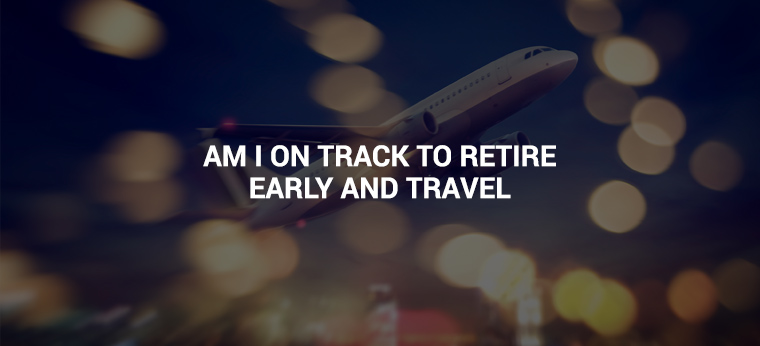
It appears that there are two solid goals almost all hard-working Canadian men and women in their late 40’s strive for. The first is the ability to retire early. The second is to travel a bit, and indulge in that freeing sense of being just a little older and a whole lot wiser.
Canadians are often finding retirement difficult. It is a transition rife with problems. Are the assets affirmed and liquid enough? Is there steady income coming in to support the likely smaller family? Canadians are struggling to retire early, but there are steps they can take starting now to be positioned for a great retirement.
Retire Early and Travel: Am I on Track?
Every situation is a little different, of course, but there are some stronger investment opportunities and others that are a little weak. It seems that about 49% of Canadian personal net worth is created through real estate, as a 2015 MoneySense wealth report details.
The main flaw with real estate is that it is not liquid. Investors have to pay fees and pay holding taxes to retain the property. They also need to pay fees through a sale that is not always guaranteed. Individuals on track will want to assess how liquid and stable their current investments are.
Corporate and Government Dividends
Rick Morrison has turned a modest total net worth into early retirement. He accomplished it not through real estate, but through alternative methods. He was lucky enough to be supported by his wife who obtained an inheritance of about $5,000 monthly from her deceased mother. But, Morrison should be able to match that with his own creative endeavors.
About 50% of his investments are based in ETF’s, which are exchange-traded funds. These funds have been considerably solid performers, but nothing that will cause any kind of frenzy. Their consistent performance of about 4.2% annually will pave the way for an early retirement for the Morrison’s.
Morrison did not only supply investments to the dividend-paying options. He also put his efforts into TFSA’s and RRSP’s. These government and corporate options only yield about 3% on average. Some investors may be lucky enough to see returns in excess of 6%, but that is a bit high for expectations. The returns are kept low because of the Canadian government’s support and stability.
How to Withdrawal
Morrison is supported by the nature of government bonds, and that is a wise choice. The consensus is that Morrison continue making modest withdrawals from his account for another decade. He takes the dividend payments and converts his RRSP to an RRIF. The RRIF will then become his main source of withdrawals.
With this set-up, he should easily be able to match and even supersede his goal of $5,000 per month. That would be plenty of money for anyone to travel with, particularly if their expenses are kept low with a paid-off mortgage, no consumer debt, and a reasonable standard-of-living.
Canadians are able to retire early if they plot their investment options wisely. Real estate, though appealing, may not have the liquidity and stability of corporate and government-backed investment stocks.
